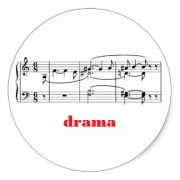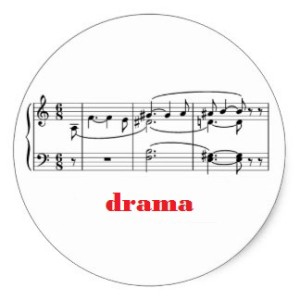Random thoughts after the Tristan chord
The “Tristan” chord, the first chord of Richard Wagner’s opera “Tristan und Isolde,” is arguably the most famous chord in history. Theorists have dedicated countless pages to it, and still do, after more than 150 years. To many, it is a landmark in the starting of post-tonal music–a pivot to the twentieth century.
The chord’s function–or lack of thereof–is the puzzle. As the first vertical sonority of the piece, it is unprepared; it “resolves” in a strange manner, amidst chromatic surroundings; the slow rhythm dilutes its comprehension, and emphasizes what seem to be appoggiaturas or altered tones. These traits are of course no happy accident; the progression masterly depicts the uncertainty and longing that the opera’s characters go through.
Theorists have analyzed the chord in a variety of ways. Many sought to make sense of it by means of traditional tonal theory, although the chord and its resolution do not constitute any of the standard progressions. It has a half-diminished-seventh structure. Many have sought to explain it as such, which means as second or seventh degree of Eb or F# respectively. Others considered it an augmented French sixth (interpreting the long G# as an appoggiatura to A). Others saw it as a G#-minor triad with an added sixth. Or an altered diminished seventh. And other entities too–including a sonority devoid of any tonal function. As the variety suggests, none of the views irrevocably explain all of the chord’s notes and behavior. And some of them go through great and strenuous lengths to do it.
Here is the opening phrase in guitar notation:
I’d like to use the chord to reflect on some aspects of music analysis. First, the myriad pages and varied interpretations that arose from the passage show that music analysis is, after all, an act of interpretation. Which is to say subjective. The word ‘analysis’ might recall some sort of scientific activity: “we must analyze a work to discover its hidden Truth.” Yet music escapes such truths. A composer might have clear intentions or reasons when writing a work, but, after completed, the work’s analysis will be subject to its performers’ interpretation. In turn, the performances will be subjectively interpreted by the listeners. And all this is good! The more views there are to consider, the richer the experience.
Some Tristan analyses also illustrate the “timelessness” of analysis, since they derive the chord’s meaning from events that happen later in the piece. Some theorists, including Schoenberg in his Harmonielehre, noted that in measures 81 and 82 of the Prelude the same chord resolves on Bb7 (dominant of Eb), and in varying degrees claimed that the original Tristan chord is the same “entity”: a second degree of Eb. This type of instant back-and-forth of our eyes is enlightening, even as music happens in real time. It can transform the same work into a different one upon repeated listenings. (And it is actually necessary sometimes. For example, you can only make rational sense of the fortissimo C# in Beethoven’s last movement of his 8th Symphony if you remember its presence in the 1st movement, and finally see it reveal itself as dominant to an F#-minor iteration of the theme toward the end of the symphony.)
Then there is the issue of appearances. Despite all the conflicting explanations, there seems to be a consensus about the A-minor tonality, or tonal area, of the Tristan Prelude. Some talk of an Am-C tonal complex. But I deem noteworthy that the opening melody, A-F-E, hardly sets our ear on A-minor land. An ascending leap of a sixth at the beginning of a piece would most likely be processed as being the 5th- and 3rd-degree scales (think of La Traviata’s “Brindisi”). I would argue that the first three notes–especially the long F–would actually hint to a D-minor tonality. Then the Tristan chord sounds unequivocally remote, as it introduces B, D# and G#, all foreign to D minor. I think that if the opening notes established the A-minor key with more certainty, the chord would have a clearer function, and it would not have deserved as much ink as it did. And, granted, the passage would not have been as memorable. Something like (with optional revoicing):
With this point, I side with analyses grounded on how the music ultimately sounds rather than looks. The fact that we can see something on paper does not mean it sounds as such. We might have all natural notes and not necessarily sound in C major. Also, since we can easily over-analyze, I think we should not lose sight of what we can humanly hear and process. Labeling every row in a serial piece might be doable on paper, but will surely overwhelm us when listening to it and might make us bypass the expressive content of the music.
A last point that can help us as performers: many times the problem, or its solution, lies not in the one particular thing, but in its surroundings–just like the spell of the Tristan chord comes from its placement within a seemingly foreign progression. For instance, when we are building an interpretation of a new piece and we are uncertain of what a passage means, or what to do with it, we should revise what happens before and after, for that is what will give that particular passage its meaning. Or, if we are failing to give a passage the expressiveness or impact that it deserves, it might be because the previous passages fail in the buildup to it. It is worth noticing that this applies to technical difficulties as well. And actually, well, to life, in the broadest sense.




